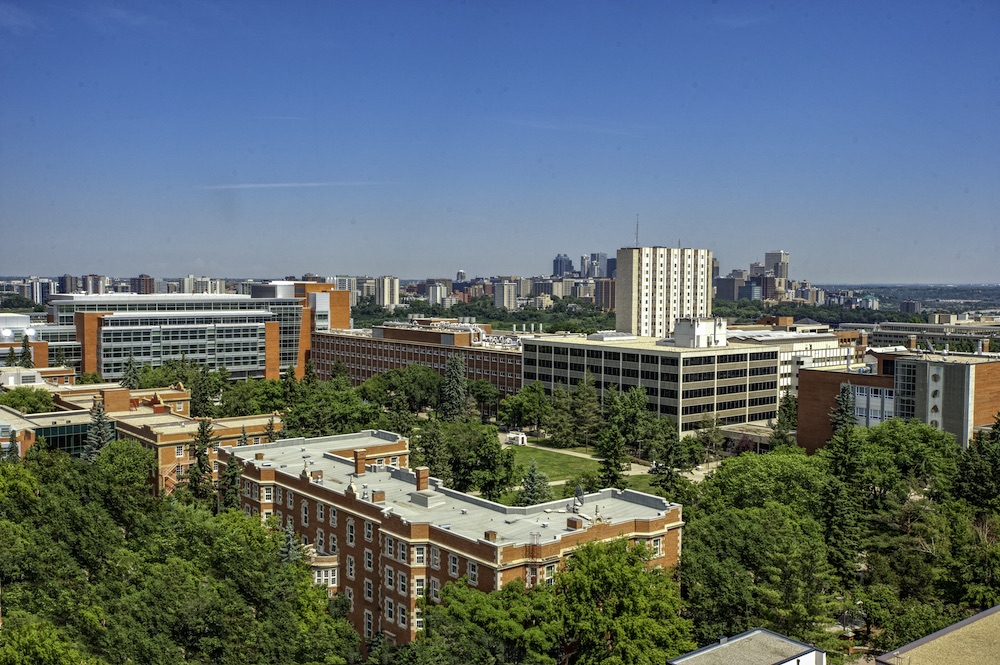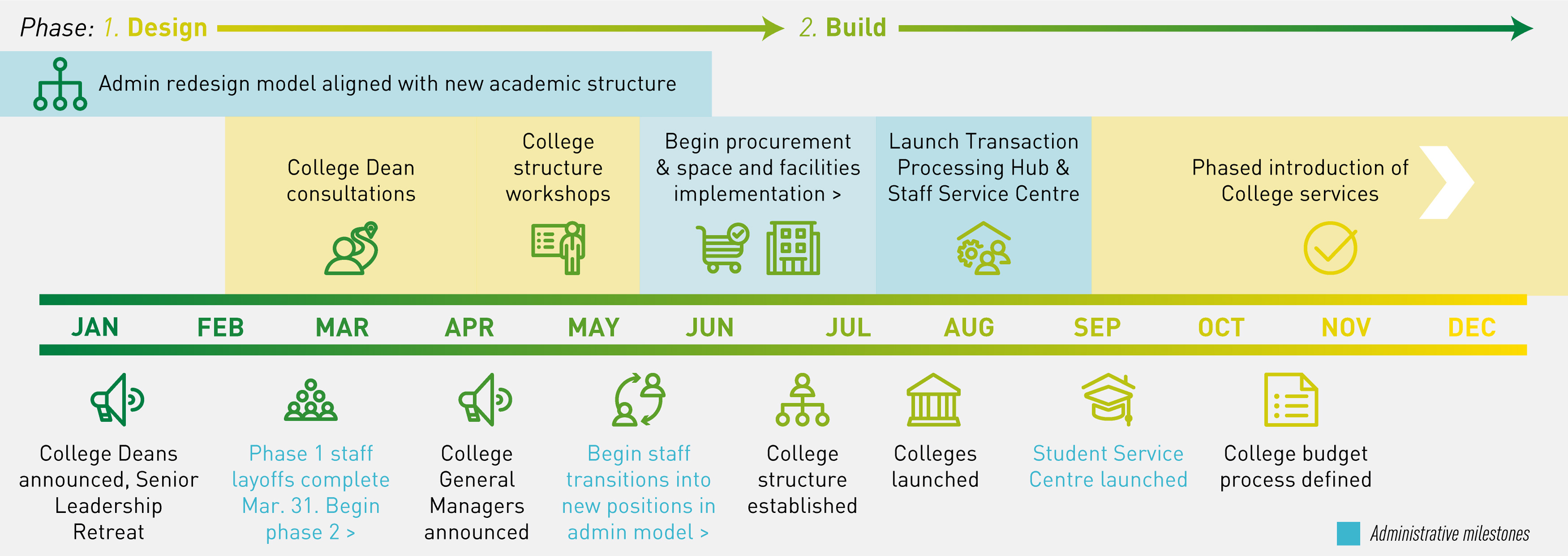College development discussions continue
Bill Flanagan and Steve Dew - 27 May 2021

On April 29, we provided an update on the development of the college structure in anticipation of the colleges’ launch on July 1. While many details will still be worked out over the next several months, we have been working with the deans and other senior leaders to determine the colleges’ overall structure, governance, authorities, and accountabilities. In doing this, we are also in the process of clarifying changing roles and responsibilities for faculties, departments, and central portfolios and clarifying how SET and the academic restructuring process will work together.

- Phase 1. Design
- January: College Deans announced, Senior Leadership Retreat
- January to June: Admin redesign model aligned with new academic structure (administrative milestone)
- March: Phase 1 staff layoffs complete Mar. 31. Begin phase 2 (administrative milestone)
- February to April: College Dean consultations
- April: College General Managers announced
- April to May: College structure workshops
- May: Begin staff transitions into new positions in admin model
- June to July: Begin procurement & space and facilities implementation
- June: College structure established
- Phase 2. Build
- July: Colleges launched
- July to September: Launch Transaction Processing Hub & Staff Service Centre
- September: Student Service Centre launched
- October: College budget process defined
- September onward: Phased introduction of College services
Any university’s reputation and success depend on the attraction and retention of high-quality talent and the continuous development of excellent academic programs that provide students with up-to-date disciplinary knowledge and skills and prepare them well for future success in their chosen path. The main goal of U of A for Tomorrow is to ensure that we can devote as many resources as possible to these core academic priorities and to create a new structure that enables academic leaders—especially chairs and deans—to do the same. This involves shifting the administrative burden away from faculties and departments, with colleges and central portfolios providing high-quality administrative services at a lower cost. Colleges will also have a pivotal role to play in enhancing collaboration and coordination both in terms of interdisciplinary and multidisciplinary teaching and research, including the provision of academic services supporting teaching and research. At all levels, we are striving for innovation, strategy, efficiency, and nimbleness.
Guiding Principles
In several retreats and meetings held over the last three weeks, the senior leadership team has been developing the new structure with the following principles as a guide:
- Supporting our core mission of excellence in teaching, research and community engagement is paramount.
- The colleges will have real and impactful standing and authority at the university.
- While recognizing there are unique features across the faculties, we nonetheless seek a clear and consistent approach to organization, functions, and responsibilities.
- Faculties require autonomy over their programs, the people who deliver them, the services linked to them, and the relationship with alumni, donors, and friends.
- Services not directly tied to the programs or specific to a faculty’s activities should be located at the college or university level.
- SET and academic restructuring are not separate nor separable.
Current Focus
Our discussions have focussed on two main areas:
- Operational leadership: In addition to outlining at a very high level the leadership roles of president, provost, vice-presidents, college deans, college general managers, faculty deans, faculty general managers, chairs, and department managers, we have also discussed and determined the purpose, decision-making powers, and budget at each level of the university.
- Professional, academic, and student support services: Through SET, the university is in the process of transitioning to the new administrative model for core professional functions, such as HR, Finance, IT, procurement, external engagement, research administration and Shared Services. In addition to these services, we have focused on how to structure the delivery of academic services and functions, such as faculty recruitment, undergraduate and graduate student services and programs (including enrolment planning, work-integrated learning, etc.), research and research facilities, international strategy engagement, and EDI and Indigenous Initiatives.
In our discussions, a few key observations have been raised. On the one hand, consistency and standardization are critical. On the other hand, it is also essential that we maintain faculty and disciplinary identity and strengths, recognizing the diversity that defines our institution. College/faculty/department balance will also be key. Colleges need the right mix of activities and responsibilities to effectively play both leadership and support roles.
We also recognize that at this stage, we will not get everything right. We will need some flexibility to make changes as we proceed through further planning and implementation. Implementation will occur in phases to ensure that we can refine as we operationalize the model.
As we look towards the formal launch of the colleges on July 1, we will be sharing more details over the coming weeks about the overall structure and the path to implementation.
Bill Flanagan, President and Vice-Chancellor
Steve Dew, Provost and Vice-President (Academic)